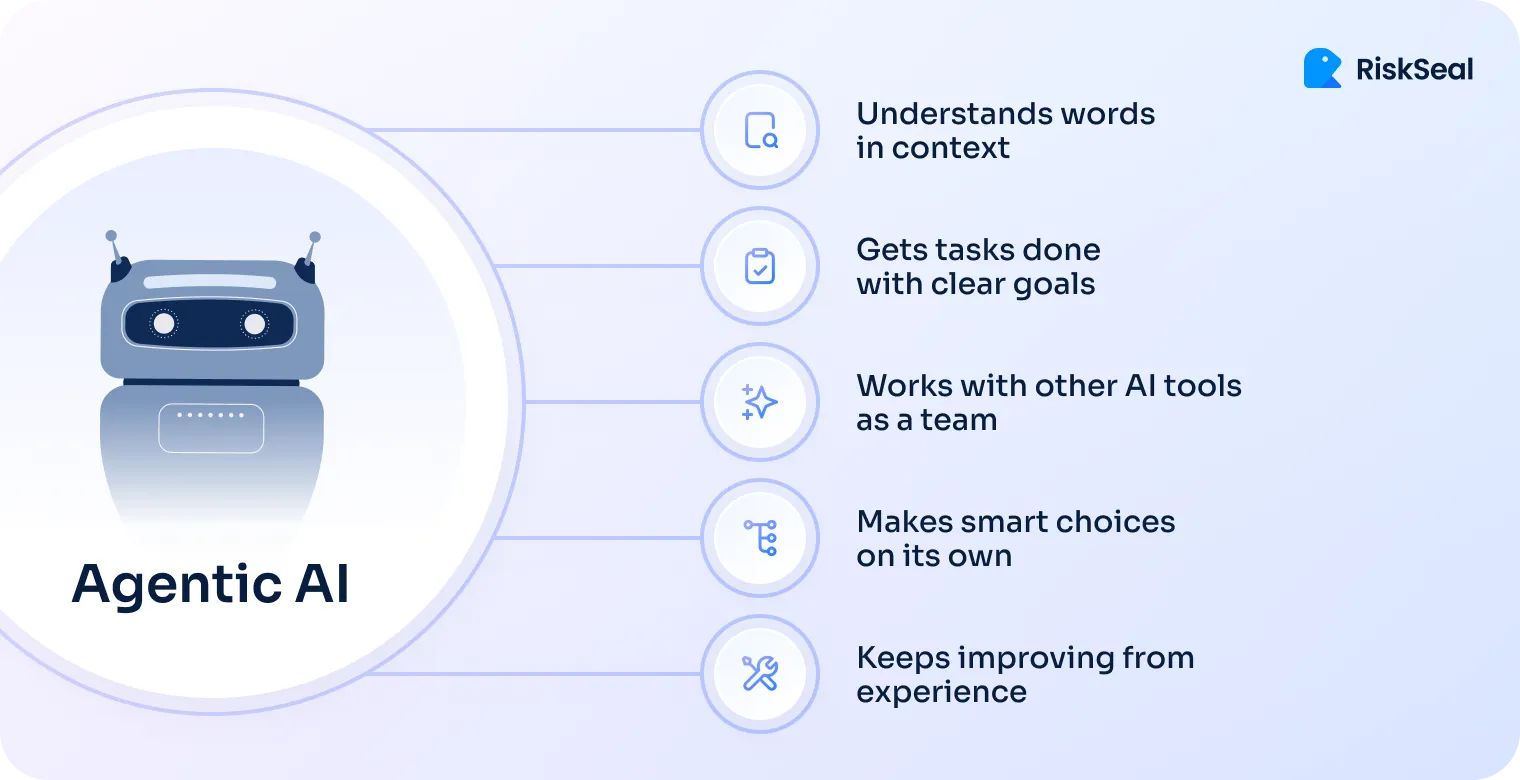Discover the meaning of Agentic AI and its role in smarter, faster, and fairer lending decisions.

Credit institutions face mounting pressure. Fraud is growing, regulations are tightening, and the economy is shifting quickly. Traditional models and manual reviews can’t keep pace.
That is why lenders are turning to advanced AI-driven systems. Among these, Agentic AI is emerging as the next frontier in credit risk management.
Unlike rule-based automation or static machine learning used in credit scoring, Agentic AI adapts in real time. It learns from new patterns and acts with clear goals in mind.

Agentic AI refers to autonomous, goal-oriented AI systems.
These systems don’t just follow pre-set rules. They can take initiative, plan tasks, and adapt to dynamic data without human prompts.
This is very different from conventional AI or machine learning models. Traditional models are predictive but static. They need retraining to handle new conditions.
Agentic AI, on the other hand, is adaptive and continuous. It evaluates risks in real time and updates its own strategies.
For lenders, this means a smarter, faster way to respond to a constantly changing risk landscape.
Many wonder if an AI agent and Agentic AI are the same thing. They’re related but not exactly the same.
An AI agent is any autonomous program that can act toward a goal, based on data and rules.
Agentic AI is a broader concept. It describes AI systems built from many such agents. They are designed to plan, adapt, and make decisions continuously with more independence.
In short, every Agentic AI uses AI agents. But not every AI agent qualifies as Agentic AI.
To understand why Agentic AI is different, it helps to compare it with the more familiar Generative AI.
Agentic AI integrates into credit risk workflows by acting like an intelligent risk assistant.
It doesn’t replace human teams, but it automates repetitive tasks while making proactive decisions.
To answer what is an AI agent in lending, let’s look at its key applications:
Monitoring borrower data streams in real time
This could be transactions, device signals, or changes in repayment behavior.
Automatically adjusting risk models
When fraud tactics shift, the AI agent adapts credit scoring rules without waiting for a retraining cycle.
Scenario modeling
For example: “What happens if interest rates rise by 2%?” The agent runs the numbers instantly and shows portfolio impact.
A crucial feature is explainability. The AI doesn’t act as a black box. Each decision comes with reasoning that can be audited by risk managers or regulators.
Agentic AI gives lenders proactive defense and continuous decision-making power. Instead of reacting after fraud occurs or defaults spike, institutions can stay ahead.
Benefits for lenders include:
Example: An agent notices unusual borrower activity. It signals potential default risk and lowers approval thresholds automatically.
This adjustment happens before delinquencies rise, preventing losses without slowing down approvals for good borrowers.
Agentic AI is not here to replace human judgment. It is a force multiplier.
Risk managers stay in control, while AI agents do the heavy lifting in monitoring, modeling, and fraud detection.
At RiskSeal, we are exploring agentic AI principles by layering autonomous monitoring, fraud prevention, and adaptive scoring.
This approach is built on 400+ digital signals. It allows us to make the credit risk assessment process both faster and far more accurate.